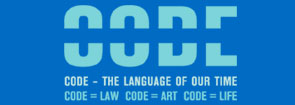| |
|
|
|
|
||
|
||||||||||||||||||||
| |
|
|
|
|
 |
|
 |
|||
| |
||||||||||
| |
||||||||||
 |
|
|||||||||
| |
||||||||||
| |
||||||||||
| |
||||||||||
| |
|
Ed Burton in der Jury für Net Vision / Net Excellence
One of your passion are toys. You are the mastermind behind "sodaconstructor", a java toy. Could you describe what the > sodaconstructor is and how it works. What is the philosophy behind? Ed Burton: For myself the inspiration for interactivity is play; the joy that comes from spontaneous experimentation and discovery. Playing has always been a central part of the way I work and now facilitating creative play has become a fulfilling aspect of what I produce when I work. The convergence of interactivity and play is made manifest in Sodaplay. The first sodaplay toy, sodaconstructor, is an engaging online construction kit that gives visitors the ability to build interactive creations from a sparse framework of dynamically modelled limbs and muscles. By altering physical properties like gravity, friction and speed, curiously anthropomorphic models can be made to walk, climb, wriggle, jiggle or alternatively collapse into a writhing heap. Sodaconstructor’s playful agenda exploded across the internet in a wave of spontaneous e-mail communication and web postings in the summer of 2000. Since then a large and active worldwide community of sodaplayers (well over 100,000 a month) have been creating their own sodaconstructions which populate the sodazoo with a bourgeoning menagerie of models that are stranger and more sophisticated than I ever imagined possible. You are critizing the trend to turn every device into a productivity tool - you would prefer to promulgate play instead ... Ed Burton: It's not that I'm anti-productivity, but I do find that often one produces the best things when there is the freedom to explore without a fixed task in mind, and a safe space in which to learn from experience by trail and error. For me play is about making and defending spaces for those happy accidents to occur. What have been the most important technical innovations for you during the last years with regard to the Net? Ed Burton: Having a phone in my pocket with enough of a browser and bandwidth to do good google. It's not the future of day trips to space and sentient machines that we were promised by 2003, but it is good. Your are writing your doctoral thesis on applying artificial intelligence as a framework to represent and investigate the way young children learn to draw. In which way do you integrate the results of your research in the development of new devices etc? Ed Burton: The core of my research is to understand the process of learning to draw as a "dynamical system": that is, a system that evolves in real time as the result of the sum of its history. Thus drawing behaviour can be seen to emerge through cycles of trial and error rather than converging on a pre-existing goal. I see that dynamic cyclic structure as the engine of development and in its abstract form is equally applicable to interaction design: in fact it's basically all that makes sodaplay work! As to Prix Ars Electronica: What are your expectations as to the submitted works? Which criteria must apply to a project worth of a Golden Nica in Net Vision and Net Excellence? Ed Burton: I need to be surprised: I guess that means the real winners will be the ones that generate new criteria that shatter whatever preconceived criteria I bring with me. Your favourite websites? Ed Burton: Google because it works so well it changes the way I work. Sissyfight, even though I never win, boo hoo. Gaydar because I prefer cruising to browsing. |  |
|
||||||
| |
||||||||||
| |
||||||||||
| |
 |
|||||||||
| © Ars Electronica Linz GmbH, info@aec.at | ||||||||||